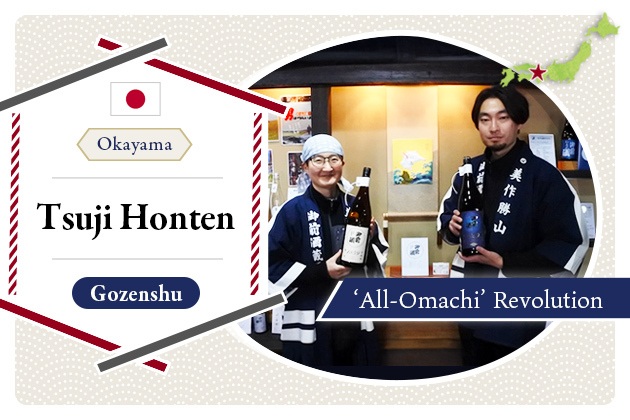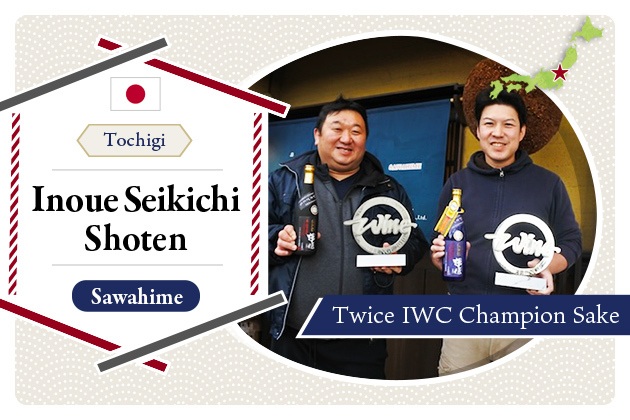
2024.09
04
What is Henpei or Genkei Polishing? - 60% Milling Ratio is Equivalent to 40% in Taste
Sake with a smaller rice polishing ratio (i.e., more rice is removed), such as ginjo and daiginjo, has a clear, clean taste with less unwanted flavors. This is because the more rice is polished, the more protein, lipid, and other components are removed, which can cause an unpleasant taste.
But did you know that you can reduce unwanted flavors not only by reducing the milling ratio value, but also by changing the way rice is polished?
In this article, we will cover three methods of polishing rice: spherical (kyukei), original (genkei), and flattened (henpei). For each method, let's learn about the shape of the rice after milling and its characteristics in sake brewing.
Regular (Spherical) Polishing
Of the three rice polishing methods introduced here, the most common is the "regular polishing" method.
In the regular polishing process, rice is milled in the shortest possible time by increasing the rotation speed of the milling machine. In this process, the density of rice in the milling machine is set low in order to reduce the percentage of rice that is broken or crushed.
In this environment, the rice rotates turbulently around a short axis. As a result, more of the length of the rice is shaved off compared to its thickness and width. This is normal milling.
Created based on The Shape and Milling Efficiency of Sake Brewing Rice, Journal of the Brewing Society of Japan 88-3
This style is also called "spherical polishing" because the rice is milled into a round shape. While regular (spherical) polishing can be milled in a short time, it has the disadvantage of milling rice to a point where it does not need to be milled.
Genkei or Original Polishing
In genkei, original-form polishing, rice is milled to an even ratio of length, width, and thickness by devising the axis of rotation and the method of shaving the rice grains. This name is derived from the fact that the white rice after milling becomes similar to the brown rice before milling.
Created based on The Shape and Milling Efficiency of Sake Brewing Rice, Journal of the Brewing Society of Japan 88-3
Substances such as proteins, which cause an unwanted taste, are distributed not only in the length of the rice, but also in the thickness and width of the rice, and are more abundant in the area close to the surface. Therefore, even at the same polishing ratio, when compared to spherical one, the protein can be removed more effectively with genkei style.
Since the thickness of the rice is not removed as much as other parts of the rice, some say that the removal of protein is still unsatisfactory compared to henpei method, which will be introduced next. On the other hand, there are survey results showing that the sake quality data of the finished sake is almost the same between the two types of rice (*).
(※) Analysis of the relationship between white rice shape and milling ratio and sake quality, by The National Research Institute of Brewing and Satake, at The Japanese Society for Brewing Science Competition 2019
In the genkei polishing, the time required for milling rice is longer than that for spherical milling and shorter than that for henpei method.
Henpei or Flattened Polishing
Henpei or flattened polishing is a process in which the thickness of the rice is reduced to a greater extent than in the genkei process, but the width is not reduced to the same extent as in the genkei.
Created based on The Shape and Milling Efficiency of Sake Brewing Rice, Journal of the Brewing Society of Japan 88-3
As the name implies, flattened shape is achieved by slowing down the rotation speed of the milling machine and increasing the pressure at the outlet.
Henpei polishing can remove proteins even more efficiently than the spherical or genkei form of milling. It is said that rice polished to 60% using the henpei method can remove as much protein as rice polished to 40% using spherical milling method.
However, henpei method has one big disadvantage: there is a lot of crushed rice, and at low milling, the germ, which contains a lot of protein and fat, is left unscraped.
In the past, very long milling times were another disadvantage of henpei polishing. It was not very practical, as the cost of milling schedules and electricity had to be adjusted. However, thanks to a newly developed rice milling machine by Satake, a Hiroshima Prefecture rice milling machine manufacturer, the time required for henpei has been greatly reduced in recent years.
As concerns about milling time disappear, if henpei style becomes even more widespread in the future, more sake will have a clear sake quality without much rice polishing.
Summary
In this article, we have introduced three methods of milling rice: regular (spherical), genkei (original), and henpei (flattened) polishing. Finally, the characteristics of each polishing method can be summarized as follows:
Improvements in rice polishing technology have helped brewers reduce rice waste and remove undesirable components of the rice that lead to off flavors. Consumers are increasingly looking for sake with a clear taste, and an increasing number of sake breweries want to use as much rice as possible in their sake production, even if it is home-grown or otherwise grown with great care. Combined with the time savings realized by Satake's new rice milling machine, we may see an increase in the number of sake breweries adopting the henpei style of rice polishing.
With new innovations in rice polishing it’s now important not only important to understand the rice polishing ratio, it’s important to understand how the rice was polished because the polishing method can have a big impact on the flavor proflle of the sake. Today’s 60% rice polishing ratio can be yesterday’s 40%.
References:
・Tomio Saito, 「酒造用白米の形状と精米効率」 [The Shape and Milling Efficiency of Sake Brewing Rice], Journal of the Brewing Society of Japan 88-3, 1993
・Textbook for J.S.A. SAKE DIPLOMA Second Edition (Japanese ver.), Japan Sommelier Association, 2020
Pickup Articles
2019.01.18
2019.01.25
Trending Articles
Popular Articles
Recent Articles













